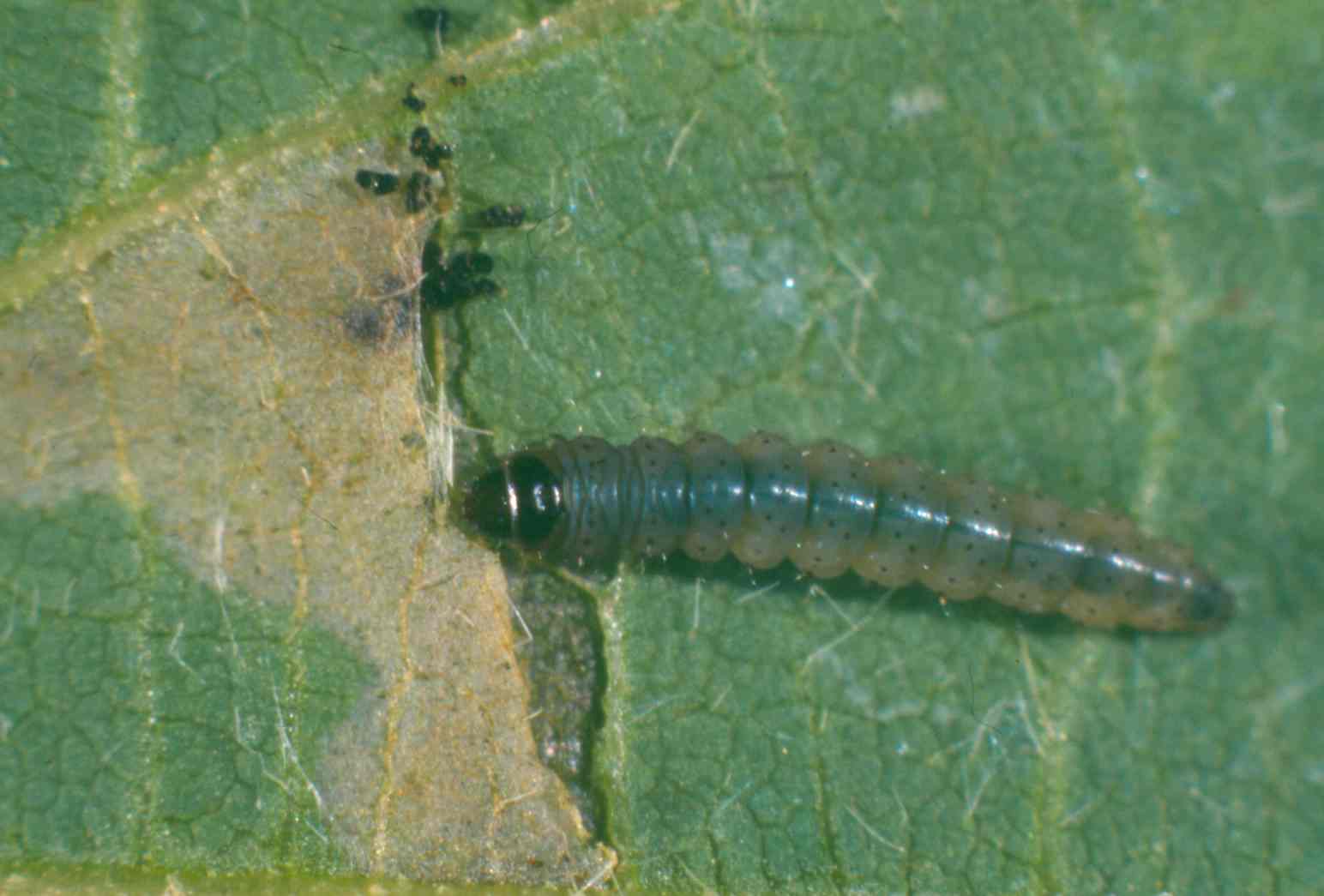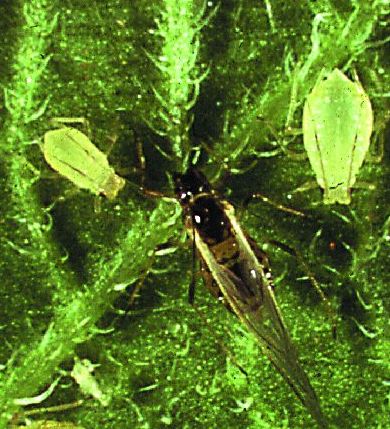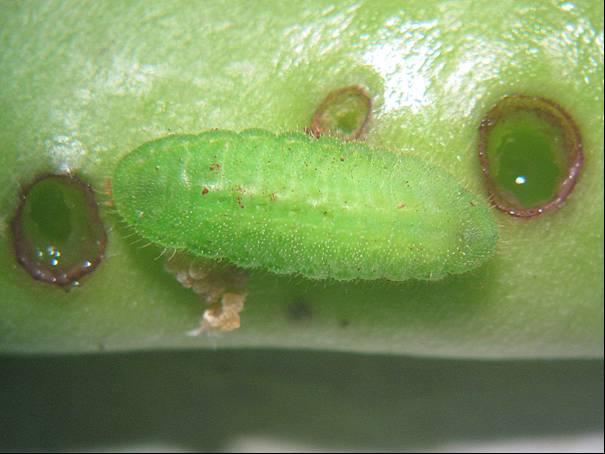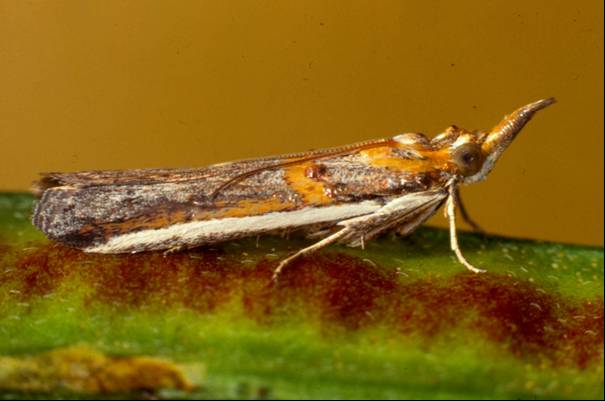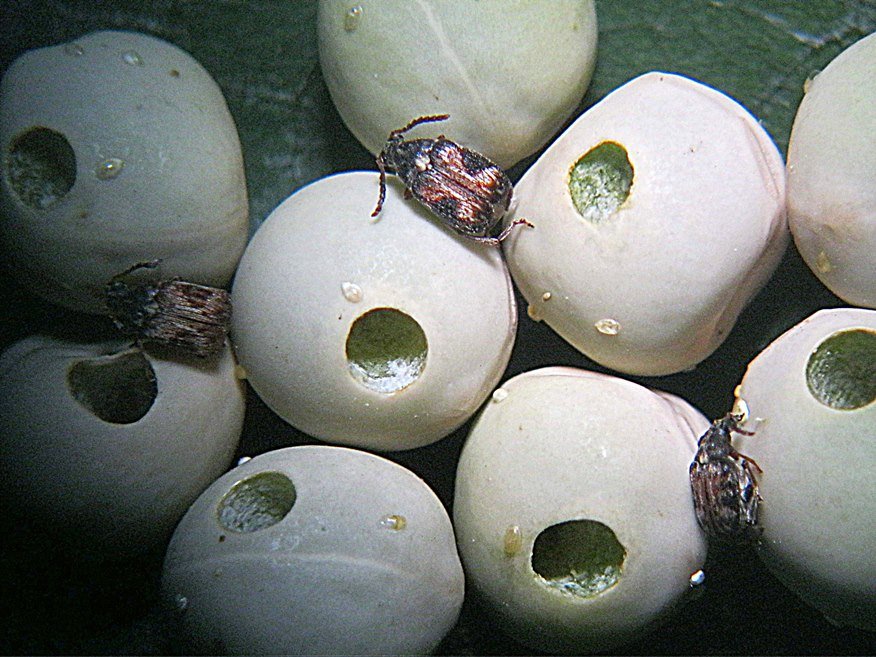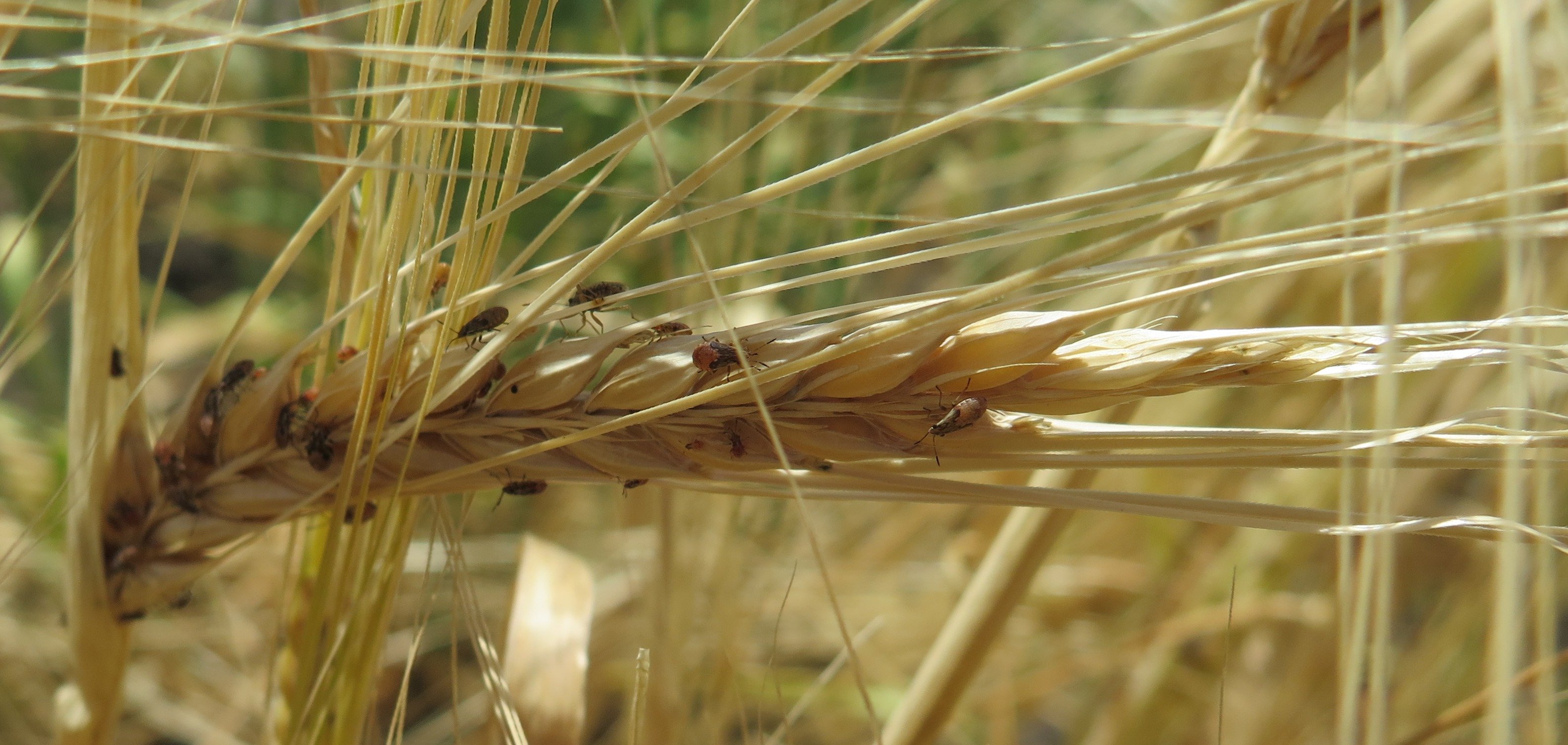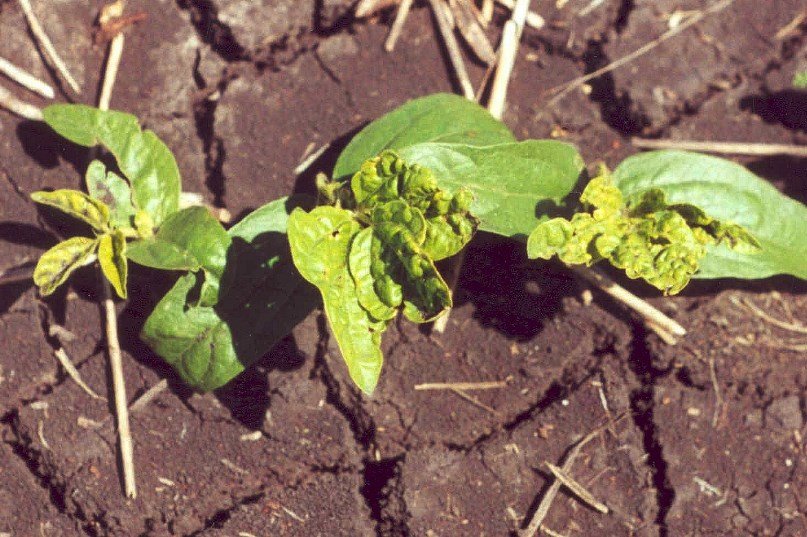Significant soybean moth activity has recently been reported in some Burdekin soybean crops. Soybean moth is a generally a minor soybean pest but significant outbreaks have been reported periodically in all soybean growing regions. Feeding damage Larvae feed mostly within the leaves, making distinctive pale leaf mines, and often distorting leaves. Soybean moth is present in low numbers in most… Read more »
Lucerne crown borer (Zygrita diva) (LCB) is causing severe damage in a number of soybean crops in the Bundaberg region of SE Qld, and on the North Coast region of NSW. In some cases up to 75% of plants are infested and early plant death is evident. Damage seems to be worse in the early (November-planted) crops which were sown… Read more »
In the autumn and early winter of 2014, large areas of canola in South Australia, Victoria and southern NSW were heavily infested with green peach aphid (GPA), and many of the infested crops tested positive for beet western yellows virus (BWYV). GRDC TV has compiled a series of three videos that discuss what factors contributed to the GPA outbreak, and… Read more »
The larvae of the grass blue butterfly (Zizina labradus) are normally minor leaf feeding pests, although they can be damaging in seedling crops where they attack terminals and axillary buds. Soybeans are their favoured summer pulse host, but they can also attack other pulses including navy beans.
A significant etiella outbreak was recently reported in pod-filling mungbean in the Moree region of North Western NSW. In this particular crop, it is estimated that etiella larvae have infested pods on 50% of plants. Etiella eggs, at low densities, were also recently observed in an early flowering crop near Bungunya (west of Goondiwindi, Qld).
There have been two reports recently of cowpea bruchid activity, with these pests infesting pulse crops in the field prior to harvest. The first report concerned the cowpea bruchid (weevil) Callosobruchus maculatus in field peas from Goondiwindi. The bruchids were noticed at intake and continued to breed in an untreated grain sample post-harvest. This clearly indicated they were not pea… Read more »
Rutherglen bug (RGB) numbers in canola stubble are again high in some fields. These infestations pose a risk to neighbouring crops, either through damage to establishing summer crops or contamination of unharvested winter crops. Both the canola and adjacent crops warrant monitoring for RGB infestation and movement out of the canola field. If large number of nymphs move into adjacent fields with seedling… Read more »
There have been several reports of seedling thrips in spring mungbean crops in the Goondiwindi region. Seedling thrips (Thrips tabaci) are also known as winter cereal thrips or cotton seedling thrips. The thrips move out of winter cereals when these start to dry off into new green spring growth such as mungbean, navy beans or cotton. Spring planted crops, especially… Read more »
Leaf mining caused by Agromyzid flies has recently been reported in wheat crops in the Goondiwindi/ Toobeah (late August) and Quirindi (late September) regions. Consultants reported their initial impression was that the damage symptoms, pale stripes on the leaves, resembled old stripe rust infections. However on closer inspection, the leaves were actually a windowed with frass visible inside the translucent… Read more »
As canola sets and matures pods, and spring temperatures rise, there are a number of caterpillar pests that are active in this crop. Along with helicoverpa there are diamondback moth larvae (Plutella xylostella) and cabbage white butterfly larvae (Pieris rapae) in crops. It is critical that you can distinguish the species, and be familiar with their respective thresholds, in order… Read more »
